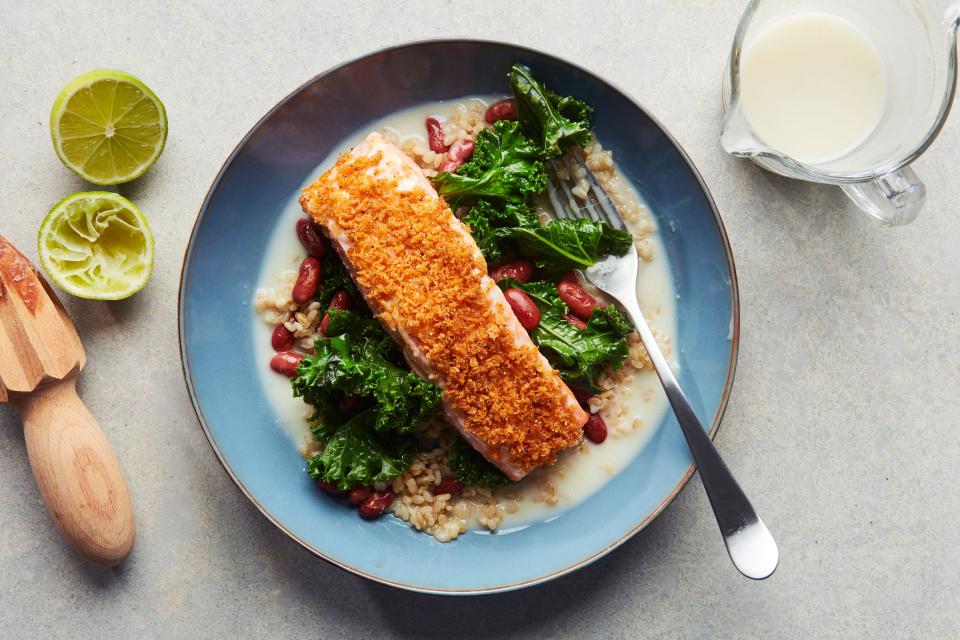Our Food Editor's 3 Favorite Tricks for Cooking Salmon Better, Faster, and More Easily
I have no shame about ordering takeout every now and then, even though it is literally my job to encourage people to cook their own dinners. I especially love grabbing food from The Food Sermon in my Brooklyn neighborhood, Crown Heights. Originally from the Caribbean island nation of St. Vincent and the Grenadines, Chef Rawlston Williams takes inspiration from West Indian flavors and techniques to build the modern fast-casual bowls he serves.
When you arrive at The Food Sermon, you choose from a streamlined menu of different types of rice, beans, greens, and proteins, all finished with either a coconut or a tomato broth around the edges of the bowl. I love the coconut ginger broth best of all, and paid homage to the idea in my new weeknight recipe for oven roasted salmon rice bowls. My version is simplified for home cooks, so those of you who don't live in Brooklyn can experience the satisfaction of one of these warming rice bowl dinners. (I promise the cooking part is easy!)
You can jump ahead to the quick salmon rice bowl recipe, but first, let's talk about the method, which calls on my favorite tricks for cooking salmon in the oven. These moves are handy any time you want an easy, foolproof way to cook a luscious filet of salmon—and fast.
1. Cover it in Mayonnaise
If you feel at all nervous about cooking fish, my advice is always to start here: cover it in mayo and then roast it. This trick adds flavor while helping to keep the fish from drying out as it cooks. Added bonus: the mayo acts as a glue you can use to adhere any crunchy topping you like. Roasting salmon in the oven means you're not going to get crispy skin, so adding a your crunch via the topping is a clever way to go. For this new recipe, I toast panko (Japanese bread crumbs) in spices and coconut oil, which play well with the coconut-ginger broth. (Does the mayo trick sound familiar? You might have seen it in our recent halibut recipe.)
2. Roast it High and Fast
When you have that protective barrier of mayo on top, eight to 10 minutes at 400°F is all you need to cook your four to six ounce salmon filets to a wonderful nearly-melting texture. It's the same kind of texture you'd get with a lower, slower method if it didn't have the mayo coating, though "slow" for salmon just means about 20 minutes at 300°F, like you see in this recipe or this one. Those recipes go slow because you don't want the top of the salmon to overcook and dry out before the middle is done. But in this one, since you've got the protective armor of mayo + crunch, you can blast your oven higher and cook your fish in half the time.
3. Remove the Skin After Cooking
The only salmon skin I want to eat is crispy salmon skin, which I need to fuss over a hot skillet to achieve. (That method also tends to make my ventilation-free apartment smell like fish.) So for a weeknight dinner like this rice bowl, I'll forgo the skin. And while I know how to skin a fish fillet, it's kind of annoying to do. What's easier is to cook the fillets with the skin on, which helps keep them nice and juicy, and then slide a fish spatula between the flesh and the skin to lift the fillet off the skin once it's cooked. It will slide right off, no problem. Just be sure to line your sheet-pan with parchment or foil to make cleanup easier.
Salmon Rice Bowls with Coconut-Ginger Broth
Originally Appeared on Epicurious


